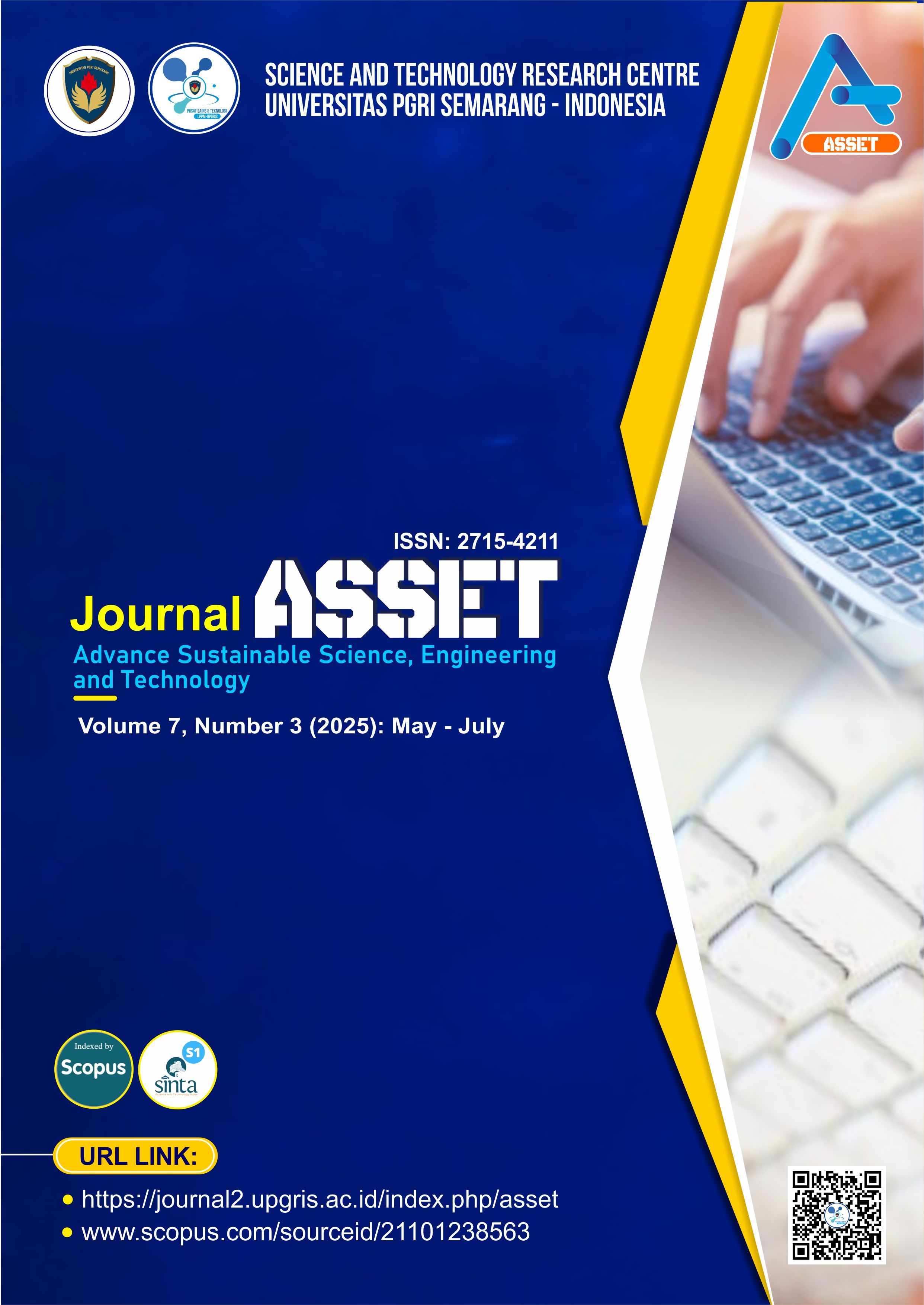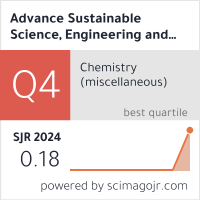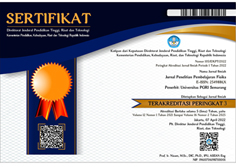An Artificial Neural Network Approach for Predicting Pavement Distress: A Case Study Toward Sustainable Road Maintenance
DOI:
https://doi.org/10.26877/asset.v7i3.2133Keywords:
Surface Distress Index, Pavement Deterioration, Intelligent Transportation Systems, Predictive Modeling, Sustainable Infrastructure ManagementAbstract
The Surface Distress Index (SDI) is a crucial parameter to consider when determining road conditions as part of an effective maintenance strategy. This study aims to develop an SDI prediction model using road surface distress data to enhance maintenance planning. The developed Artificial Neural Network (ANN) model resulted in an optimal structure with two hidden layers comprising 6 neurons and 4 neurons, respectively. The model was trained using two years of surface distress data collected from 40 road sections managed by the city’s road maintenance division. Variables used included Composition, Condition, Depression, Patches, Damage types, Crack Area, and Crack Width. The results demonstrated high accuracy in predicting SDI, with model performance achieving an R² of 0.87. This model can be applied to optimize the efficiency of road maintenance strategies.
References
[1] P. Paplauskas, A. Vaitkus, and R. Simanavičienė, “Road Pavement Condition Index Deterioration Model For Network-Level Analysis Of National Road Network Based On Pavement Condition Scanning Data,” Baltic Journal of Road and Bridge Engineering, vol. 18, no. 3, 2023, doi: 10.7250/bjrbe.2023-18.609.
[2] N. A. Stevens, M. Lydon, A. H. Marshall, and S. Taylor, “Identification of bridge key performance indicators using survival analysis for future network-wide structural health monitoring,” Sensors (Switzerland), vol. 20, no. 23, 2020, doi: 10.3390/s20236894.
[3] B. H. Setiadji, D. Purwanto, and Y. I. Wicaksono, “Improvement of Potholes and Rutting Assessment in Surface Distress Index,” in Proceedings of the 2nd International Symposium on Transportation Studies in Developing Countries (ISTSDC 2019), Atlantis Press, 2020, pp. 162–166. doi: 10.2991/aer.k.200220.034.
[4] M. J. Heidari, A. Najafi, and J. G. Borges, “Introducing New Index in Forest Roads Pavement Management System,” Forests, vol. 13, no. 10, p. 1674, 2022, doi: 10.3390/f13101674.
[5] A. Martinelli et al., “Road Surface Anomaly Assessment Using Low-Cost Accelerometers: A Machine Learning Approach,” Sensors, vol. 22, no. 10, p. 3788, 2022, doi: 10.3390/s22103788.
[6] K. Doycheva, C. Koch, and M. König, “Implementing Textural Features on GPUs for Improved Real-Time Pavement Distress Detection,” J Real Time Image Process, vol. 16, no. 5, pp. 1383–1394, 2016, doi: 10.1007/s11554-016-0648-1.
[7] S. Cano-Ortiz, P. Pascual-Muñoz, and D. Castro-Fresno, “Machine learning algorithms for monitoring pavement performance,” 2022. doi: 10.1016/j.autcon.2022.104309.
[8] Z. Allah Bukhsh, I. Stipanovic, A. Saeed, and A. G. Doree, “Maintenance intervention predictions using entity-embedding neural networks,” Autom Constr, vol. 116, 2020, doi: 10.1016/j.autcon.2020.103202.
[9] Y. Pan, X. Zhang, G. Cervone, and L. Yang, “Detection of Asphalt Pavement Potholes and Cracks Based on the Unmanned Aerial Vehicle Multispectral Imagery,” IEEE J Sel Top Appl Earth Obs Remote Sens, vol. 11, no. 10, 2018, doi: 10.1109/JSTARS.2018.2865528.
[10] L. Lendra, M. A. Wibowo, and J. U. D. Hatmoko, “A Systematic Literature Network Analysis: Research Mapping of International Roughness Index,” Instrumentation Mesure Metrologie, vol. 22, no. 3, 2023, doi: 10.18280/i2m.220301.
[11] A. Consilvio et al., “Towards a digital twin-based intelligent decision support for road maintenance,” in Transportation Research Procedia, 2023. doi: 10.1016/j.trpro.2023.02.237.
[12] A. Issa, H. Samaneh, and M. Ghanim, “Predicting pavement condition index using artificial neural networks approach,” Ain Shams Engineering Journal, vol. 13, no. 1, 2022, doi: 10.1016/j.asej.2021.04.033.
[13] A. Sharma, S. N. Sachdeva, and P. Aggarwal, “Predicting IRI Using Machine Learning Techniques,” International Journal of Pavement Research and Technology, vol. 16, no. 1, 2023, doi: 10.1007/s42947-021-00119-w.
[14] E. Setyowati, S. Fuada, K. Anwar, M. D. Danuarteu, S. T. F. Purba, and A. Wijaya, “Introducing 6G technology to support metaverse for telecommunication engineering students in Universitas Pendidikan Indonesia,” Community Empowerment, vol. 8, no. 2, pp. 210–222, Feb. 2023, doi: 10.31603/ce.8075.
[15] S. Barman and R. Bandyopadhyaya, “Modelling crash severity outcomes for low speed urban roads using back propagation – Artificial neural network (BP – ANN) – A case study in Indian context,” IATSS Research, vol. 47, no. 3, 2023, doi: 10.1016/j.iatssr.2023.08.002.
[16] J. Li, G. Yin, X. Wang, and W. Yan, “Automated decision making in highway pavement preventive maintenance based on deep learning,” Autom Constr, vol. 135, 2022, doi: 10.1016/j.autcon.2021.104111.
[17] A. Abdualaziz Ali, U. Heneash, A. Hussein, and S. Khan, “Application of Artificial neural network technique for prediction of pavement roughness as a performance indicator,” Journal of King Saud University - Engineering Sciences, 2023, doi: 10.1016/j.jksues.2023.01.001.
[18] A. A. Ali, A. Hussein, and U. Heneash, “Performance of Soft Computing Technique in Predicting the Pavement International Roughness Index: Case Study,” International Journal of Pavement Research and Technology, pp. 1–19, 2023.
[19] N. Abdelaziz, R. T. Abd El-Hakim, S. M. El-Badawy, and H. A. Afify, “International Roughness Index prediction model for flexible pavements,” International Journal of Pavement Engineering, vol. 21, no. 1, pp. 88–99, 2020.
[20] H. Pérez-Acebo, M. Isasa, I. Gurrutxaga, H. García, and A. Insausti, “International Roughness Index (IRI) prediction models for freeways,” Transportation Research Procedia, vol. 71, pp. 292–299, 2023, doi: 10.1016/j.trpro.2023.11.087.
[21] A. Sidess, A. Ravina, and E. Oged, “A model for predicting the deterioration of the international roughness index,” International Journal of Pavement Engineering, vol. 23, no. 5, pp. 1393–1403, 2022.
[22] O. G. Dela Cruz, C. A. Mendoza, and K. D. Lopez, “International Roughness Index as Road Performance Indicator: A Literature Review,” in IOP Conference Series: Earth and Environmental Science, 2021. doi: 10.1088/1755-1315/822/1/012016.
[23] B. R. Knost and R. G. Mishalani, “Modeling the Systematic Error in Pavement Deterioration Forecasts: Empirical Results and Interpretations Using Airfield PCI Data,” Journal of Infrastructure Systems, vol. 27, no. 4, 2021, doi: 10.1061/(asce)is.1943-555x.0000635.
[24] N. S. Ahmed, N. Huynh, S. Gassman, R. Mullen, C. Pierce, and Y. Chen, “Predicting Pavement Structural Condition Using Machine Learning Methods,” Sustainability (Switzerland), vol. 14, no. 14, 2022, doi: 10.3390/su14148627.
[25] A. Ali, U. Heneash, A. Hussein, and M. Eskebi, “Predicting Pavement Condition Index Using Fuzzy Logic Technique,” Infrastructures (Basel), vol. 7, no. 7, 2022, doi: 10.3390/infrastructures7070091.
[26] M. Sirhan, S. Bekhor, and A. Sidess, “Implementation of Deep Neural Networks for Pavement Condition Index Prediction,” Journal of Transportation Engineering, Part B: Pavements, vol. 148, no. 1, 2022, doi: 10.1061/jpeodx.0000333.
[27] R. Imam, Y. Murad, I. Asi, and A. Shatnawi, “Predicting Pavement Condition Index from International Roughness Index using Gene Expression Programming,” Innovative Infrastructure Solutions, vol. 6, no. 3, 2021, doi: 10.1007/s41062-021-00504-1.











